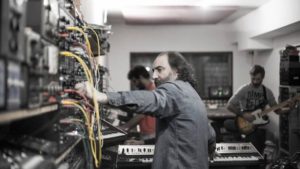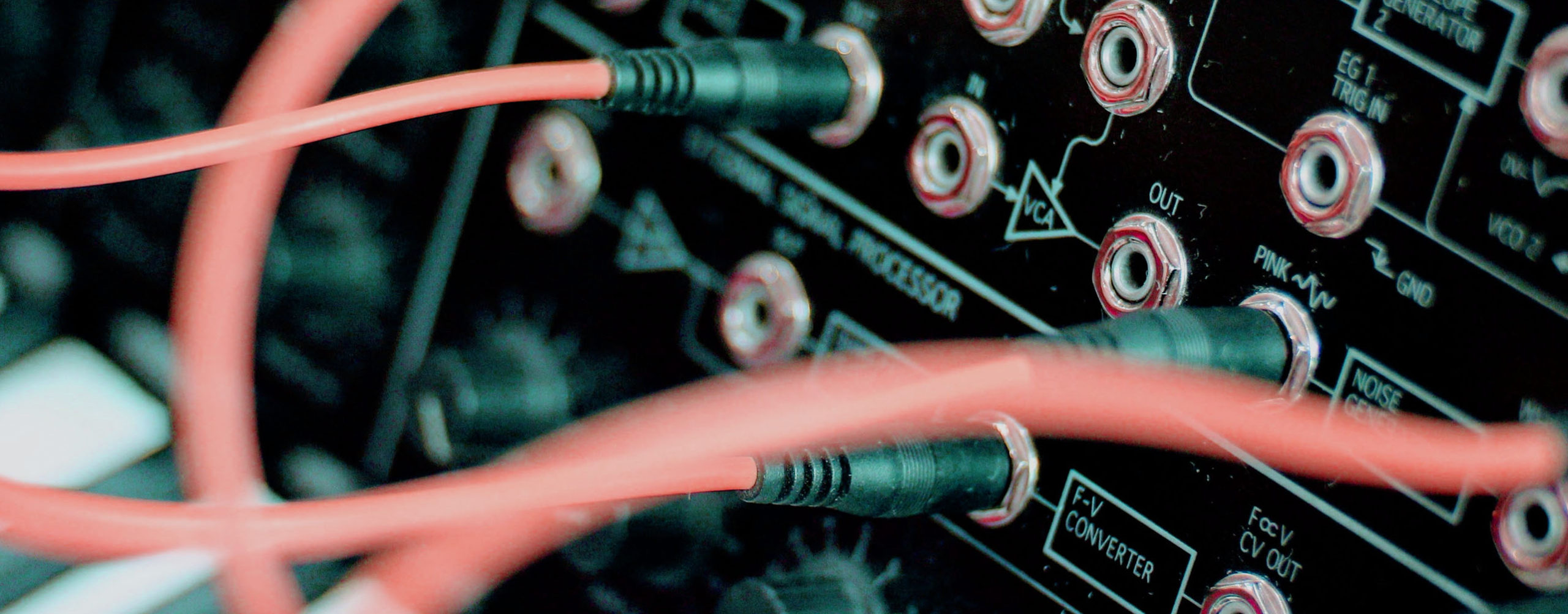Electronic music has undergone a continuous evolution over the decades, and machines have played a fundamental role in this sonic revolution. We have consulted different Latin American artists to reveal which they believe are the tools that have left an indelible mark on this ever-changing musical genre.
Discover the selection and how these machines have revolutionized electronic music as we know it:
Mika Martini (Chile)

Chilean artist Mika Martini highlights three machines that he considers revolutionary for electronic music. First, he mentions the Sequential Circuits Prophet-600, released in 1982, which was the first synthesizer to implement the MIDI standard, allowing full interconnection between synthesizers and the control of other machines.
Secondly, the Akai MPC60 Sampler from 1988, which was an advanced sampler with MIDI capabilities and touch-sensitive pads. This machine allowed creative manipulation and sequencing of audio samples, being an essential tool in electronic and hip-hop music production.
Finally, the Commodore 64 computer, released in 1982, was one of the first widely accessible devices used to create music. Equipped with the SID sound chip, the Commodore 64 offered advanced sound synthesis and playback capabilities for its time, and was used in conjunction with specific software to compose and produce music in the home environment.
“These three machines revolutionized electronic music by introducing new forms of production, sound manipulation capabilities and the ability to create music in the home. They also laid the groundwork for the development of new musical styles and the democratization of music production”.
La Siesta del Fauno (Argentina)

Ernesto Romeo is an Argentine producer recognized for his work with various electronic music devices and equipment. Some of the highlights in his list are the following:
Moog & Buchla Modular System: integral devices designed for the composition and production of voltage-controlled electroacoustic music, fundamental in the world of modular synthesizers.
Roland TR808 Rhythm Composer: The first “drum machine” that made it possible to compose and perform patterns dynamically and flexibly in real time, with a distinctive synthetic sound.
E-Mu Emulator II Sampler: A sampler that revolutionized electronic music with its sampling technology, used by artists such as Vangelis, Depeche Mode and Genesis.
“These devices and equipment have left a significant mark on the history of electronic music, influencing various genres and artists, and laying the groundwork for the development of new production and sound techniques”.
Deenia (México)

Mexican DJ and producer, Deenia, has worked with a selection of equipment and synthesizers that have allowed her to create high quality music and highlights the Korg Volca series, which includes the Sample, Beats and Keys models. These analog synthesizers offer excellent connectivity with each other, providing a complete studio at an affordable cost.
She also uses Roland Boutique synthesizers, specifically the SH01A and Ju-06A, which are affordable replicas of legendary gear. These synthesizers are ideal for generating bass and creating atmospheres in his productions.
Another notable acquisition is Behringer’s TD-03, a replica of the classic TB-03 at an affordable price. This powerful piece of equipment allows you to create acid bass lines. Overall, these synthesizers have been excellent purchases for Deenia, allowing him to take his music to the next level.
Almanacs (Honduras)

Almanacs is the recording project of Wilmer Murillo, a Honduran musician and visual designer who creates experimental electronic music using mainly modular synthesizers, digital manipulation of analog sounds and field recordings. This is his selection:
Teenager Engineer OP-1: A compact and versatile digital synthesizer that has been used in numerous electronic projects over the past 10 years. The entire music production process can be carried out with this device.
Korg Volca FM: Like Deenia, Almanacs, considers the Korg Volca to be an affordable and portable synthesizer based on the legendary DX7, and its compact size has allowed many artists to create music anywhere.
Mutable Instruments Clouds: A legendary module in the world of modular synthesizers. It is considered essential for those starting out in this field. It allows processing audio signals with complex granular processes, generating beautiful and deep sound textures.
Rico Jorge (Brasil)

Within the culture of Brazilian music, Rico Jorge composes based on electronic sounds, techno and experimental sounds in dialogue with the social, political and utopian standards that we live in the current era.
“I’ve been reflecting on the idea of three machines that were very important in building the electronic scene here in Brazil, and it’s hard to think without remembering that instruments, mainly focused on electronic music, were never easy to access here. For that reason, we had tools that were used in different ways”.
The first machine I would highlight would be the MPC 1000, a studio instrument that became a performance instrument for DJs accompanying Funk MCs at dances, improvising beats, building a narrative and perhaps several songs would only exist there. At the time, recording and releasing a song wasn’t so simple around here.
The second device he selects is the famous Space Echo. A delay with such a specific timbre that goes back to the beginnings of electronic music up to today’s productions, configuring a unique sound and being replicated in different ways by different manufacturers.
And finally, Roland’s TR series, in particular the 808, for having shaped so many musical styles and still being so strongly present in electronic music today, such that artists manipulate the samples so much that you can always embark on another sonic journey without losing the classic timbral background. Almost everyone who opens a DAW to start producing their music first encounters samples from this machine.
There is no doubt that these machines have left a lasting legacy in electronic music, transforming the way this genre is produced and created. From pioneering synthesizers to innovative samplers, these tools have allowed artists and producers to create and experiment with new sounds and lead the way into the future of electronic music.

